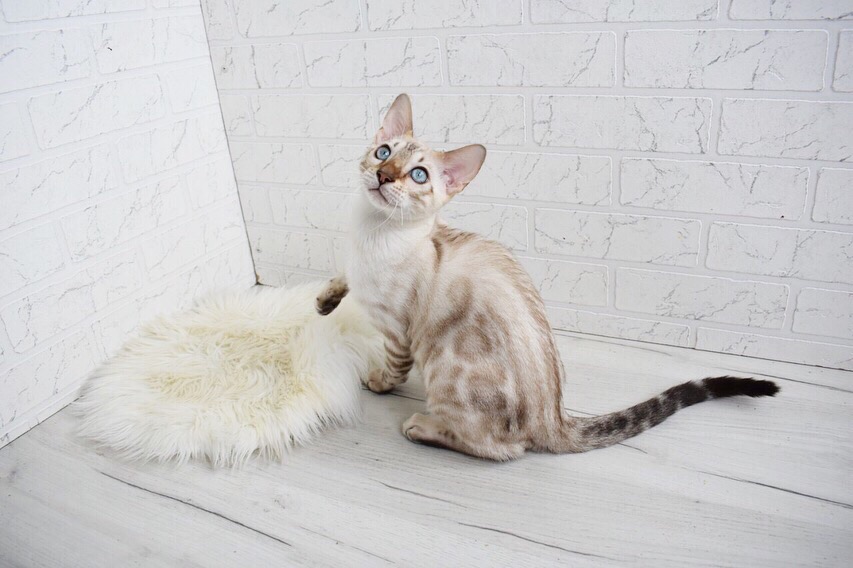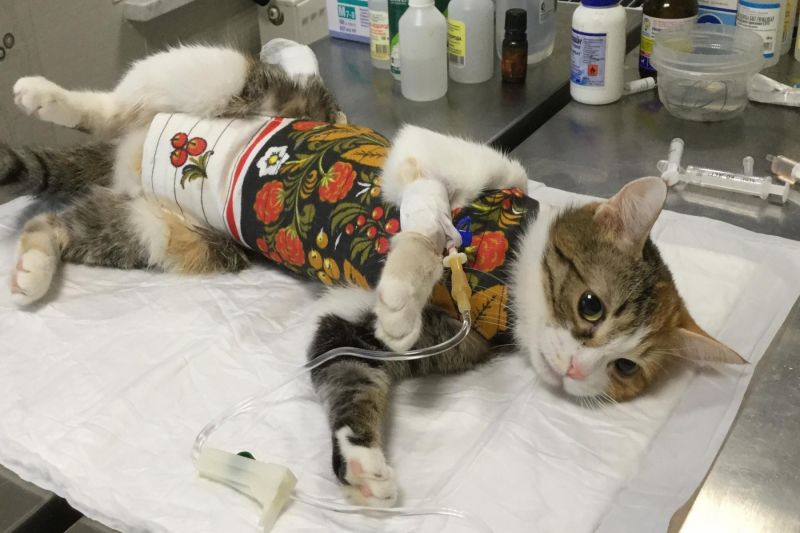What is cat sterilization?
The childbearing function of a pet can bring both joy to the house from the birth of small kittens, and flour from constant cries, and “walks” of the pet. In this case, it is important for the owner to decide what kind of function his animal has: will it be used for breeding or just a “beast on a pillow”. If the second option is more relevant for you, you should consider sterilizing cats. This is a surgical procedure that is performed under general anesthesia. During it, all organs responsible for the reproduction of offspring are removed.
Remark! In fact, sterilization of a cat means removal of the ovaries, and if we are talking about all the "female" organs - this is castration. But in view of the fact that people are accustomed to the term "sterilization" - veterinarians use it.
After the operation, the caudate changes literally within a month. In purrs, the production of female sex hormones is blocked, the hormonal background is leveled. She instantly becomes calmer and stops “screaming”.
Optimal age for cat sterilization

Many owners who decide to carry out such a procedure as their pet ask themselves the question: “What is the ideal age for sterilizing cats and does not have serious consequences?” Veterinarians unanimously say that it’s better not to delay, as years leave their imprint on health and can give rise to additional contraindications, difficulties in undergoing surgery, departure from anesthesia, etc.
You can sterilize a cat aged 7-8 months and older.
Experts say that a younger organism risks not managing the operation or giving complications on the future development of the individual. After 10 years, removal of the uterus and ovaries is not recommended.
Preparing a cat for sterilization
In order to minimize the risks of complications during and after sterilization of a cat, one should take seriously the recommendations of a specialist regarding preparation for the procedure.
First of all, you need to limit the pet in food for 12 hours before manipulation, for a couple of hours - to deprive of water. This is due to the fact that anesthesia gives a frequent side effect in the form of vomiting. If the animal is unconscious, and there is food in the stomach, it can simply begin to choke on it, suffocate.
It is important that the four-footed be vaccinated. Anesthesia affects immunity, lowers it. In a veterinary clinic, the risk of catching an infection from other visitors increases.
Mistake! Many owners think that before sterilizing a cat it is desirable that she gives birth at least once, supposedly she feels her true destiny and becomes a mother. This is a huge misconception that can minimize the whole effect of the procedure. The fact is that during pregnancy and childbirth, pussies release sex hormones. If in a nulliparous pet they are reproduced only in the female organs, then after the appearance of the offspring - in others. Thus, even after the operation, the purr will probably continue to “shout”.
Cat care after sterilization
In order for a cat to be sterilized successfully, without consequences, it is important to follow all the recommendations of your veterinarian. In this case, you and your pet will enjoy each other’s company after the operation, but without such annoying “screams”.
Cat after anesthesia after sterilization

Most people are most concerned about how fluffy feels after anesthesia. Specialists recommend paying special attention to eyes that do not close even under the influence of drugs. In order for their mucous membrane to not dry out, it is advisable to use special drops (artificial tear).
The doctor is likely to prescribe antibiotic injections that minimize the possibility of inflammation, infection. The first will be done immediately after the operating room, the second you can do at home or bring the animal to the clinic.
At home, prepare a secluded corner to which there will not be excessive access for children, other animals. Peace is important. Also try to save your pet from direct sunlight. After anesthesia after sterilization, they can only once again excite the tail.
Sometimes, the pet does not want to eat for 3 days after the clinic. Do not be scared - this is absolutely normal.
Seam after cat sterilization
After surgery on the body, the four-leg will remain a seam. Usually it is only a few centimeters in length and does not cause serious difficulties in caring for it. Sometimes special clothes (blankets) are put on the body of the caudate. It protects the seam after sterilizing the cat from licking, ingress of dirt, germs. Below in the picture you can see the scheme of its proper donning. Just don't pinch the strings too much. The pet should be easy and comfortable in it.
If there is none, it will be enough to carefully treat it several times a day with an antiseptic solution, for example, Chlorhexidine.
Possible complications
Urinary incontinence;
Rapid weight gain;
Suppuration of the suture;
Internal bleeding;
Bacterial peritonitis.
In order for a cat to be sterilized successfully, without consequences, it is important to follow all the recommendations of your veterinarian. In this case, you and your pet will enjoy each other’s company after the operation, but without such annoying “screams”.
 Select language
Select language 





.jpg)
.jpg)
.jpg)
.png)
